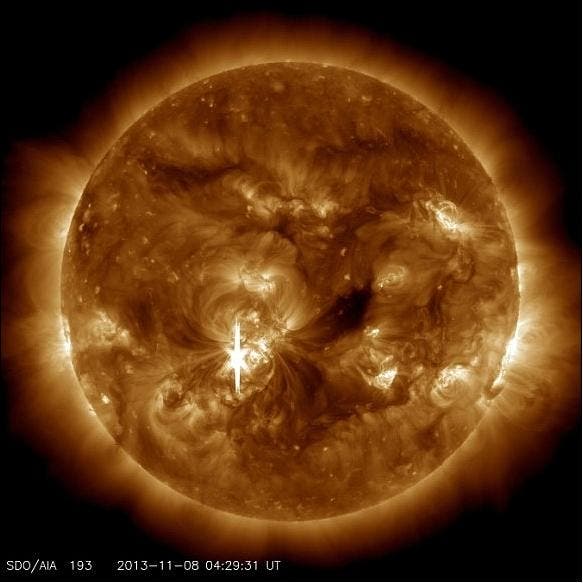If you’ve ever seen images of the Sun, you may have noticed some dark marks on the surface of the corona, the aura of plasma that surrounds the Sun and other stars. These dark spots are massive areas that are colder than the surrounding corona — still very hot, mind you, just not as hot as the rest of the corona. Now, astronomers have a new way of identifying them.

Usually, astronomers observe and identify coronal holes using Extreme Ultraviolet (EUV) and X-ray light detectors. However, it is hard to differentiate the dark features which are holes from other dark spots, such as filaments. It’s easy to tell there’s a dark area on the solar corona, but figuring out what that dark spot is not as easy.
Now, a team of scientists developed an artificial neural network called CHRONNOS (Coronal Hole RecOgnition Neural Network Over multi-Spectral-data) to identify the coronal holes. They used data collected by SDO (Solar Dynamics Observatory) NASA satellite, from November 2010 to December 2016, to train and test the model.
The magic of the model lies in giving data with an increasing image resolution. Starting for example, with 8×8 pixels, then 64×64 pixels, and finally 512×512 pixels. This is done to give as much information to the AI and for faster performance, lower-resolution data is easier for the network to analyze.
As you can see in the video, the team used the timelapse of the last two months of each year from 2010 to 2019. The red contours show the holes over the days with a surprisingly smooth transitional variation.
The new method was successful at detecting 261 coronal holes within that time period with 98.1% of correct detections. The team also compared the relation between the holes detected with sunspots. They have concluded that their model is independent from solar activity, whether it’s in its maximum or minimum.
The study was published in Astronomy & Astrophysics.






